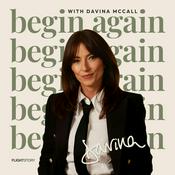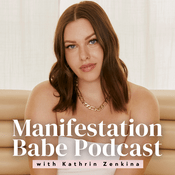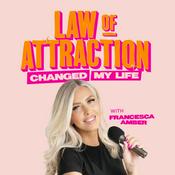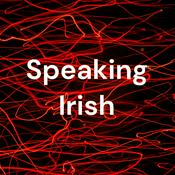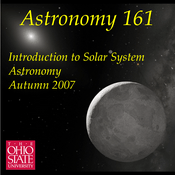307 episodes
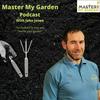
EP307 - Grow Your Own Workshop Launch 2026
15/12/2025 | 12 mins.
After a few years of procrastination and hiding I am delighted to launch my grow your own food workshops for 2026. Two dates 21st February & 21st March are the only two dates for this workshop in 2026. Ready to turn gardening advice into fresh salads, sweet strawberries, and a steady stream of herbs from your own space? We’re opening two small-group Grow Your Own Food workshops this spring, built for beginners and seasoned gardeners who want practical, no-nonsense results.Across a relaxed day in the polytunnel and garden, we’ll show the essentials that actually move the needle: reliable seed sowing, simple no-dig bed setup, correct fruit tree planting, smart spacing, and succession strategies that stretch your harvests. Bring photos and questions from your garden, balcony, or allotment. We’ll troubleshoot anything you are struggling with so you leave full of confidence. Expect simple grounded information a light lunch, and time for one-to-one help so you leave with a clear plan for the season ahead. If you’ve been meaning to start or want better, longer harvests with less stress, this is your spring reset. Secure your spot, invite a friend, and come away ready to plant with confidence. To book your workshop visit the link: https://subscribepage.io/growyourownfoodworkshopI look forward to welcoming you to my garden. Support the showIf there is any topic you would like covered in future episodes, please let me know. Email: [email protected] Check out Master My Garden on the following channels Facebook: https://www.facebook.com/mastermygarden/ Instagram @Mastermygarden https://www.instagram.com/mastermygarden/ Until next week Happy gardening John

EP306 - Top 10 episode Master My Garden podcast 2025 : Top Ten Garden Favourites 2024
12/12/2025 | 23 mins.
Ever wonder what gardeners truly need when the skies won’t clear and the soil stays cold and heavy? We open the vault on six years of downloads to reveal the ten most-listened episodes and the lessons they teach us about resilient design, living soils, and planting that thrives despite the weather. This is a practical, story-rich tour through the conversations that changed how we grow.We start with structure and colour: smart garden design and June Blake’s vivid plant choices that keep borders alive for months. Then we head underground. Dr Elaine Ingham demystifies the Soil Food Web, turning biology into decisions you can make at the bed edge. Charles Dowding’s no-dig approach shows the payoff of compost and calm soil—fewer weeds, better moisture, and crops that root fast. Along the way, we unpack the enduring pull of companion planting, from predator-friendly flowers to classic pairings that cut pests without chemicals.Craft and adaptation anchor the middle of the list. Compost coach Kate Flood maps hot heaps, worm farms, and bokashi to your space and schedule so you can turn waste into a reliable soil engine. We revisit organic growing with Klaus Leitenberger for varieties that actually like Irish summers, and we tap into Niall Macaulay’s creator mindset for simple, repeatable techniques. A surprise chart-climber—growing lavender in Ireland—proves that the right hardy varieties and drainage can deliver scent and pollinators even in a soggy year. We round out with wildflower meadows guided by Sandro Caffola, a masterclass in building habitat and beauty together.By the end, you’ll know where to start, what to try next, and which episodes to queue up for specific goals—better soils, cleaner beds, longer bloom, and crops that cope. If this countdown helps you plan your next season, follow the show, share it with a gardener who needs a lift, and leave a quick review so we can keep shaping episodes around what helps you grow most.Support the showIf there is any topic you would like covered in future episodes, please let me know. Email: [email protected] Check out Master My Garden on the following channels Facebook: https://www.facebook.com/mastermygarden/ Instagram @Mastermygarden https://www.instagram.com/mastermygarden/ Until next week Happy gardening John

EP305 - Christmas Planters For The Festive Season & Beyond!!
05/12/2025 | 24 mins.
Your front door deserves more than a week of glitter. We break down how to build Christmas planters that look festive now, thrive in deep shade, and transition smoothly into spring without waste. The secret is designing for longevity: choose a strong evergreen centrepiece, layer hardy winter colour, and add seasonal touches you can lift out in January.We start with structure. Skimmia japonica tops our list for glossy leaves and vibrant buds that read instantly “Christmas” yet stay handsome for months. Holly brings classic winter mood, while taxus and box cones or balls give clean shapes that handle outdoor lights beautifully. We also explore pieris and compact conifers like junipers and cryptomeria for texture that stands up under a porch with minimal winter watering. If you want to keep them in pots, match compost to plant needs and watch moisture as days get longer.Then we build colour that lasts. Violas and pansies in deep reds and purples are cold-tolerant and cheerful well into spring. Cyclamen adds drama if you’re happy to deadhead, and primroses, polyanthus, and bellis round out a soft, friendly palette. For the long game, tuck bulbs beneath the bedding; hyacinths or dwarf narcissus will push through late winter and extend the show. Prefer zero maintenance? We share a cut-greenery planter: damp compost, layered evergreens, red-stem dogwood or birch twigs, pine cones, and warm micro-lights for a lush, foam-free display you can compost after New Year.We make a strong case for skipping sprayed or painted plants. They look dated by mid-January and usually end up in the bin. Instead, use simple picks—a small robin, a subtle Santa, tiny parcels—to add Christmas notes you can remove later, revealing a timeless winter container. By repeating two or three colours, mixing glossy leaves with soft blooms, and scaling pots to your doorway, you’ll get a display that feels fresh, natural, and welcoming every day.If this guide helps you rethink festive containers, follow the show, share it with a gardening friend, and leave a quick review. Got a planter you’re proud of? Tag us with a photo and tell us your go-to winter centrepiece.Support the showIf there is any topic you would like covered in future episodes, please let me know. Email: [email protected] Check out Master My Garden on the following channels Facebook: https://www.facebook.com/mastermygarden/ Instagram @Mastermygarden https://www.instagram.com/mastermygarden/ Until next week Happy gardening John

EP304 - Matt Future Forests Chats Bareroot. From Hedging To Heritage Apples: What Irish Gardeners Are Planting Now
28/11/2025 | 52 mins.
Cold weather set the stage and bare root season is off to a flying start. We bring Mattie from Future Forests back on the mic to share straight-talking, field-tested advice on hedging, trees, and the edible surge that’s reshaping Irish gardens. If you’ve ever wondered which whip size actually makes sense, when staking is non‑negotiable, or why those tall instant hedges sometimes flop, this conversation is your blueprint for smarter planting.We dig into the fruit boom: the apple that almost never fails (Katie), the plum pair that keeps winning (Victoria and Jubilee), and the pear trio that finally fixes pollination headaches (Conference, Beth, Concord). Soft fruit gets its due too—raspberries, currants, blueberries—and a timely case for damsons as the resilient, flavour‑rich choice for trickier sites. Quince demand is spiking, heritage apples are pulling people online, and more buyers want honest descriptions that flag disease risks before they commit.Hedges are being rethought with a more resilient lens. Hawthorn leads for biodiversity and farm edges, beech and hornbeam anchor structure, and evergreen picks get a reality check. Portuguese laurel still impresses but shows mildew pressure in pockets; yew is underused and superb on good ground; Japanese privet is clean and dense; and griselinia holds up when pruned early enough to dodge frost damage. Along the coast, fuchsia hedges remain iconic and vigorous. We also trade notes on unusual trees—Caucasian wingnut, Zelkova, standout hawthorns—and why some beloved cultivars like Paul’s Scarlet no longer earn their keep.Practical wins frame the whole chat: never plant a dry root, dip as you go, protect with stakes where needed, use mycorrhizal fungi to speed establishment, mulch to lock in moisture, and be ready for that now‑predictable April or May dry spell. We round out with perennials and ferns for texture and shade, plus a thoughtful look at native provenance and sourcing balance across Irish and trusted European growers.If you found this useful, follow the show, share it with a gardener who needs a nudge, and leave a review to help others find us. Then head to futureforest.ie for plants, sizes, and advice tailored to your site.https://futureforests.ieSupport the showIf there is any topic you would like covered in future episodes, please let me know. Email: [email protected] Check out Master My Garden on the following channels Facebook: https://www.facebook.com/mastermygarden/ Instagram @Mastermygarden https://www.instagram.com/mastermygarden/ Until next week Happy gardening John

EP303- Christmas Gifts For Gardeners 2026 What’s On Your List? Gifts Gardeners Actually Want This Christmas
21/11/2025 | 1h 7 mins.
Tired of guesswork and gimmicks? We unpack Christmas gifts that gardeners actually want and use, blending practical tools, cosy comforts, and learning experiences that make a real difference outdoors. Stephen and Eibhlin, long-time listeners at different stages in their gardening journeys, join us to bring fresh ideas that fit small patios, big plots, tight budgets, and thoughtful splurges.We start with essentials that earn their keep: quality secateurs paired with a holster, gloves that balance dexterity and protection, and the underrated power of a well-chosen voucher to time seeds and bulbs perfectly. From there, we build themed hampers that create a full creative arc—like a dried-flower kit with inspiring book picks, seed packs, a small raised bed, and a brass-framed display to show off the results. Comfort gets its moment too: hammocks for a shaded corner, potting benches that save your back, kneelers that make weeding tolerable, and indoor Click & Grow units that keep herbs going when daylight fades. We even get into handsome Hawes watering cans that deliver precision without spoiling your kitchen shelf.If your garden’s a bit further along, we go deeper with problem-solvers and statement pieces: waders for pond edits, a mattock that outmuscles most root jobs, salvage-yard gems like character pots and sturdy boot cleaners, and fire pits that stretch summer evenings. We round things out with gifts that grow skills and confidence—courses on veg and propagation, local garden consultations that prevent expensive mistakes, and standout books from Irish experts like TJ Maher, Jimmy Blake, and Klaus Laitenberger. For the dreamers, we plant the seed for garden pilgrimages to Kew or Keukenhof’s tulip spectacle.Share this with the person who buys your presents, build your wishlist, and let’s make sure the next gift you unwrap actually gets used. If you enjoy these ideas, subscribe, leave a review, and tell a friend who’s planning their own garden upgrades this winter.Support the showIf there is any topic you would like covered in future episodes, please let me know. Email: [email protected] Check out Master My Garden on the following channels Facebook: https://www.facebook.com/mastermygarden/ Instagram @Mastermygarden https://www.instagram.com/mastermygarden/ Until next week Happy gardening John
More Education podcasts
Trending Education podcasts
About Master My Garden Podcast
Listen to Master My Garden Podcast, The Daily Stoic and many other podcasts from around the world with the radio.net app

Get the free radio.net app
- Stations and podcasts to bookmark
- Stream via Wi-Fi or Bluetooth
- Supports Carplay & Android Auto
- Many other app features
Get the free radio.net app
- Stations and podcasts to bookmark
- Stream via Wi-Fi or Bluetooth
- Supports Carplay & Android Auto
- Many other app features


Master My Garden Podcast
download the app,
start listening.





